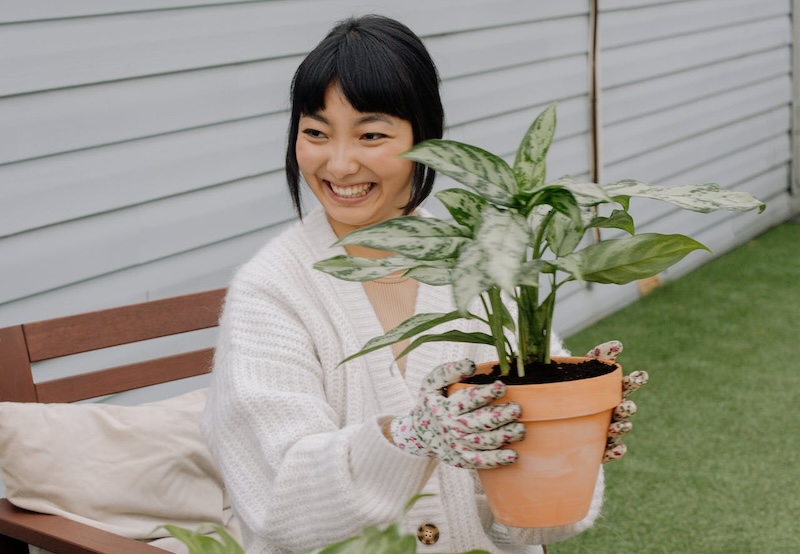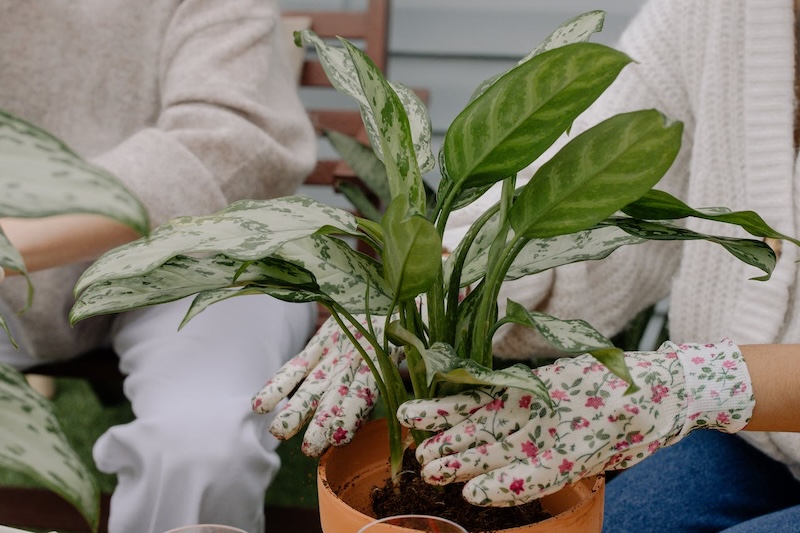Plants in pots and containers are not able to access all their necessary nutrients from the soil like plants growing in the wild or in the ground do. When your plant needs to be fertilized, it may slow its growth or stop growing, and it may appear unhealthy. Fertilizing your plant every few months will benefit its overall health and beauty.

Why Fertilize Aglaonema
Potting soil often has added fertilizer to help your plant get the nutrients it needs; however, over time, the nutrients get used up and may wash out of the soil during watering. Fertilizing aglaonema helps to replenish the nutrients, which are most needed when the plant is actively growing during the spring and summer. Aglaonemas also benefit from new potting soil, so try to re-pot your aglaonema about every 1-2 years. Keeping your plant well fed will ensure its longevity and may even encourage blooming.
How Often To Fertilize Aglaonema
Aglaonemas are prone to being over-fertilized. Too much fertilizer can burn the roots and the leaves, causing yellow or brown marks. You can reduce the risk of over-fertilizing your plant by diluting liquid houseplant fertilizer to half the strength recommended on the label. Use liquid fertilizer to feed your aglaonema once per month during the spring and summer. Avoid fertilizing in the winter when the plant is resting.
How To Tell If Aglaonema Needs Fertilizer
A hungry aglaonema may grow slowly or not grow it all. Its leaves may appear small and yellow, indicating a lack of nitrogen. Over time, salt from fertilizer and tap water can build up in the soil. Too much salt can cause your plant’s health to decline. Refresh the plant’s soil every 1-2 years during the spring or early summertime. This timing will make the transition easier for the plant as it will be actively growing.

Best Fertilizer For Aglaonema
Follow the label instructions on either a liquid fertilizer or slow-release formula. Feed your aglaonema using a houseplant fertilizer with a balanced NPK ratio. The balanced levels of nitrogen, phosphorus, and potassium will help the plant grow healthy roots and new foliage. Nitrogen primarily supports foliage growth, and since aglaonemas are typically grown for foliage, you can select a formula with slightly higher nitrogen levels. Espoma Organic 8 Ounce Concentrated Indoor! Plant Food is a great choice.
Aglaonema Fertilizing Tips
You can boost your aglaonema’s overall health and appearance by occasionally providing it with fertilizer.
- Use fertilizer with a balanced NPK ratio
- Use a slow-release fertilizer in pellets, or a good liquid fertilizer like Dyna-Gro Grow or Espoma Organic 8 Ounce Concentrated Indoor! Plant Food
- Reduce the risk of over-fertilizing your plant by diluting liquid houseplant fertilizer to half strength
- Avoid fertilizing in the winter
- Yellowing leaves on your aglaonema can indicate a lack of nitrogen
 |
Author Chris Link - Published 12-9-2023 |
